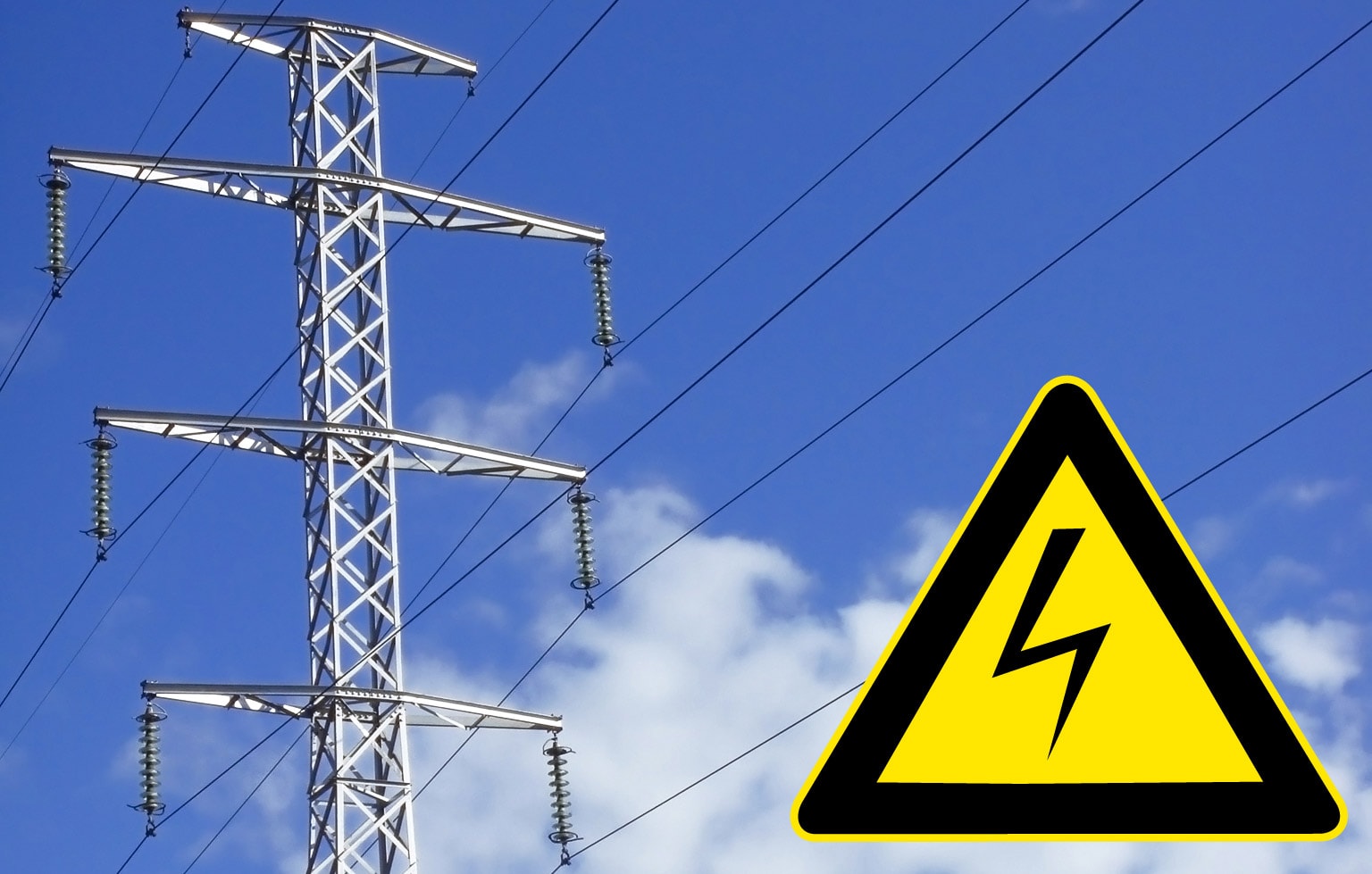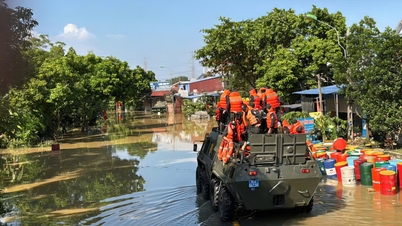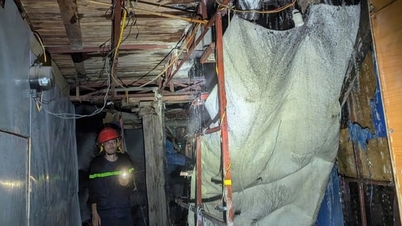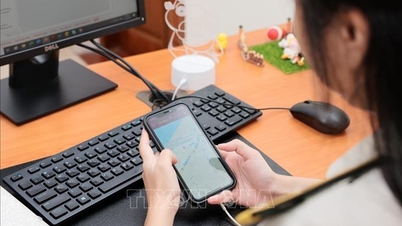Floods not only sweep away property but also pose a host of potential hazards, especially electrical risks. When wiring, outlets or electrical equipment are submerged in water, even a small mistake can cause a fire or dangerous electric shock.

This article will guide you through the most basic but important measures to ensure electrical safety after floods, helping to protect yourself, your family and your home from unfortunate incidents during the recovery process after a natural disaster.
1. Put personal safety first
Before touching any electrical equipment or systems in a recently flooded area, the most important thing is to protect yourself. Wear protective gear such as rubber gloves, insulated boots, and waterproof clothing to reduce the risk of direct contact with electricity or contaminated water.
If the water level is still high, or you cannot determine whether the area is safe, do not take any risks. Instead, wait for a technician or utility company to come and check and take action before doing anything.
2. Disconnect the power as soon as possible.
If the area is safe and you can reach the electrical panel without wading through water, quickly turn off the main power switch and all branch circuit breakers to isolate the home's electrical system.
Timely power shut-off not only helps prevent the risk of electric shock but also limits damage to electrical equipment and minimizes the risk of fire and explosion due to short circuits after flooding.
3. Only turn on the power when it is really safe.
Never turn the power back on until the floodwaters have completely receded and the entire system has been thoroughly inspected by a professional electrician. Don’t assume the area is dry, but residual moisture in the outlet, wiring, or electrical panel can still cause a short circuit and lead to electric shock.
Having a professional electrician evaluate your home before restoring power is the most important step in ensuring your safety and that of your home after a flood.
4. Check carefully before using electrical equipment.
Once the water has receded, do not turn on appliances or plug them back into outlets that have been flooded. They may appear dry on the outside, but moisture or debris left inside components can still cause short circuits or electric shock.
Have an electrician inspect the entire system, load test it, and confirm it is safe before using any equipment again. This is an important step to avoid dangerous incidents after a flood.
5. Absolutely keep away from water in sockets or switches.
If you find standing water around electrical outlets or switches, do not touch them or attempt to turn them on. Water conducts electricity, and even minor contact can cause a serious electric shock.
When water has entered these areas, it is a clear sign that the electrical system may have been damaged. Turn off the main power and call a professional electrician to check it out, rather than trying to fix it yourself.
6. Replace flooded electrical components, do not attempt to repair them.
Any electrical component that has been exposed to floodwater, from outlets, switches, circuit breakers to wiring, is at risk of failure and will need to be completely replaced.
Do not attempt to “fix” the problem by wiping it off or making temporary repairs, as residual moisture can cause electrical short circuits, electrical leaks, or even fires.
Replacing these devices not only helps the electrical system operate stably but also ensures absolute safety for the house after the flood.
7. Prioritize using high power sources, away from wet areas
When temporary power is needed after a flood, use only outlets or appliances that are installed high up, out of the range of possible rising water.
Never use extension cords or portable power outlets in damp areas, as even a small section of cord touching water can cause the entire system to become electrified.
Keeping all electrical equipment away from wet floors is the most important rule of safety during flood recovery.
8. Hire a professional electrician to check and fix the system
After a flood, don’t attempt to fix electrical problems yourself. Hire a licensed electrician with hands-on experience to inspect, repair, and replace damaged parts of your system.
These professionals not only have the equipment necessary to detect potential risks, but also ensure your entire electrical system is restored to safety standards and in compliance with current technical regulations.
9. Be proactive in preventing electrical risks when living in flood-prone areas.
If your home is in an area that is prone to flooding, it may be a good idea to upgrade your electrical system. Install outlets, switches, and circuit breakers above the water line to reduce the risk of damage from flooding.
At the same time, it is advisable to equip the outdoor electrical panel with a waterproof coating to protect the components from moisture and rainwater, a small solution but brings long-term safety efficiency.
10. Equip every family member with electrical safety knowledge
Don’t leave it to just one person to know what to do in the event of a flood. Make sure everyone in the family understands electrical safety rules, from not touching appliances, outlets, or cords in flooded areas to alerting an adult or the authorities if a problem is discovered.
Education and preparation help the whole family respond more quickly, reduce risks, and keep everyone safe in an emergency.
In short, electrical safety should always be a top priority, especially during and after floods, when the risk of electrical leakage, short circuits or fires increases. Being cautious, proactively cutting off the power source and seeking the assistance of professional electricians is the best way to ensure the safety of people and property.
By following the instructions and precautions outlined above, you will not only minimize the risk of accidents but also help keep your home and loved ones safe./.
Source: https://baonghean.vn/phong-ngua-tai-nan-dien-sau-mua-lu-can-lam-ngay-nhung-dieu-nay-10307922.html


![[Photo] Opening of the World Cultural Festival in Hanoi](https://vphoto.vietnam.vn/thumb/1200x675/vietnam/resource/IMAGE/2025/10/10/1760113426728_ndo_br_lehoi-khaimac-jpg.webp)

![[Photo] Ho Chi Minh City is brilliant with flags and flowers on the eve of the 1st Party Congress, term 2025-2030](https://vphoto.vietnam.vn/thumb/1200x675/vietnam/resource/IMAGE/2025/10/10/1760102923219_ndo_br_thiet-ke-chua-co-ten-43-png.webp)

![[Photo] Unique Phu Gia horse hat weaving craft](https://vphoto.vietnam.vn/thumb/1200x675/vietnam/resource/IMAGE/2025/10/10/1760084018320_ndo_br_01-jpg.webp)



































































































Comment (0)